Biodiversity and Protection of forest
- 15
- 13




Biodiversity loss is a sustainability issue that has garnered an increasing amount of attention globally over the past few years. Qisda commits to protecting forest ecosystems and halting the loss of biodiversity in accordance with the United Nations Sustainable Development Goals and continues to stabilize the impact of its value chain on biodiversity.
We have further published a publicly accessible Commitment to No-Deforestation and Biodiversity, and regularly report progress on this front to both the Corporate Sustainable Development Committee and the Board of Directors.
- Qisda's global operating sites are mainly located in industrial parks, and the Company does not conduct any of its business activities in key biodiversity areas.However, we still highly value the ecosystem resources in the areas surrounding our factories, and have conducted biodiversity surveys in the surrounding environment in addition to establishing action plans for avoiding, repairing, and offsetting any impact our operations may have on biodiversity.
- In 2025, Qisda will initiate a biodiversity assessment across the value chain, extending the evaluation to suppliers and customers. This effort aims to enhance understanding of the Company’s dependence on and interconnection with natural capital throughout its operations. By doing so, Qisda seeks to identify actual or potential risks and opportunities associated with biodiversity at different stages of its business activities. (Please refer to the results of Qisda's 2025 biodiversity analysis across the value chain)
Through reforestation efforts and compliance with domestic and international laws, Qisda collaborates with its customers, suppliers, and partners to contribute to the protection of forest ecosystems and biodiversity.
We commit to:
Our goal is to achieve a Net Positive Impact (NPI) on biodiversity by 2050, while simul-taneously terminating any form of Gross Deforestation. Qisda will actively engage with internal and external stakeholders—including employees, shareholders/investors, customers, government, public associations, suppliers/contractors, and communities—to build consensus on environmental actions.
Biodiversity Risk Assessment and its Scope
In 2023, Qisda Corporation collaborated with BenQ Foundation and the Department of Soil and Water Conservation of the National Chung-Hsing University to investigate biodiversity dependencies and impacts. The corporation employed the Taskforce on Nature-related Financial Disclosures (TNFD) framework to disclose the natural risks and opportunities management of the corporation. The Locate, Evaluate, Assess and Prepare (LEAP) approach was used to demonstrate the resilience of the corporation when facing nature-related risks and meet the general public’s expectation regarding sustainable development.
The TNFD LEAP approach is as follows:
Locate | Evaluate | Access | Prepare |
|---|---|---|---|
| Locate the Corporation’s interface with nature | Evaluate the Corporation’s dependencies and impacts on nature | Access the Corporation’s nature-related risks and opportunities | Prepare to respond to, and report on, material nature-related issues, aligned with the TNFD’s recommended disclosures |
Through the process to determine material topics, Qisda found that the issue of biodiversity is not currently of high concern to its stakeholders, as no significant impacts or risks have been identified. Despite biodiversity not being a prominent issue to our stakeholders, we continue to collaborate with the BenQ Foundation to adopt fields long-term, not only supporting friendly farming but protecting the environment at the same time.
BRF analytical tool
The corporation first employed the Biodiversity Risk Filter and its weightings table provided by the World Wide Fund for Nature (WWF) to identify potential dependencies and impacts in the field of electronics industry. Then, the assessment consisted of two parts- an evaluation using Biodiversity Risk Filter (BRF) analytical tool and a Questionnaire survey for the biodiversity efforts of the corporation.
- The BRF analytical tool was introduced by the WWF to assess risks and opportunities of corporate operations in different industries. The corporation utilized this tool to assess the global operations related to eight categories: Provisioning Services, Regulating & Supporting Services – Enabling, Regulating Services – Mitigating, Cultural Services, Pressures on Biodiversity, Environmental Factors, Socioeconomic Factors and Additional Reputational Factors.
- The results indicated that on average, the Physical Risks at each operating base were evaluated as high, while Reputational Risks were evaluated as moderate and Cultural Services received very low risk scores.
- In regards to physical risk categories that were evaluated as high risks all operating bases received high-risk scores in Provisioning Services and Regulating Services – Mitigating.
- As seen in Table 1 and Table 2, under Regulating & Supporting Services – Enabling, bases in Taipei, Taoyuan and Hanam were evaluated as high risk while the Suzhou base was evaluated as medium risk in Water Scarcity. All bases received high-risk scores in Limited Wild Flora & Fauna Availability.
- As such, Provisioning Services as a whole was evaluated as high risk. Under Regulating Services – Mitigating, bases in Taipei and Taoyuan were evaluated as very high risk while the Hanam and Suzhou bases were evaluated as high risk in Landslides.
- In Wildfire Hazard, the Hanam base received a high-risk score, the Taipei and Suzhou bases received medium scores while the Taoyuan base was given a low-risk score.
- In Extreme Heat, bases in Taipei and Taoyuan received low-risk scores while the Suzhou and Hanam bases were given high-risk scores. All bases were evaluated as high risk in Typhoons.
- As such, Regulating Services – Mitigating was evaluated as high risk overall.
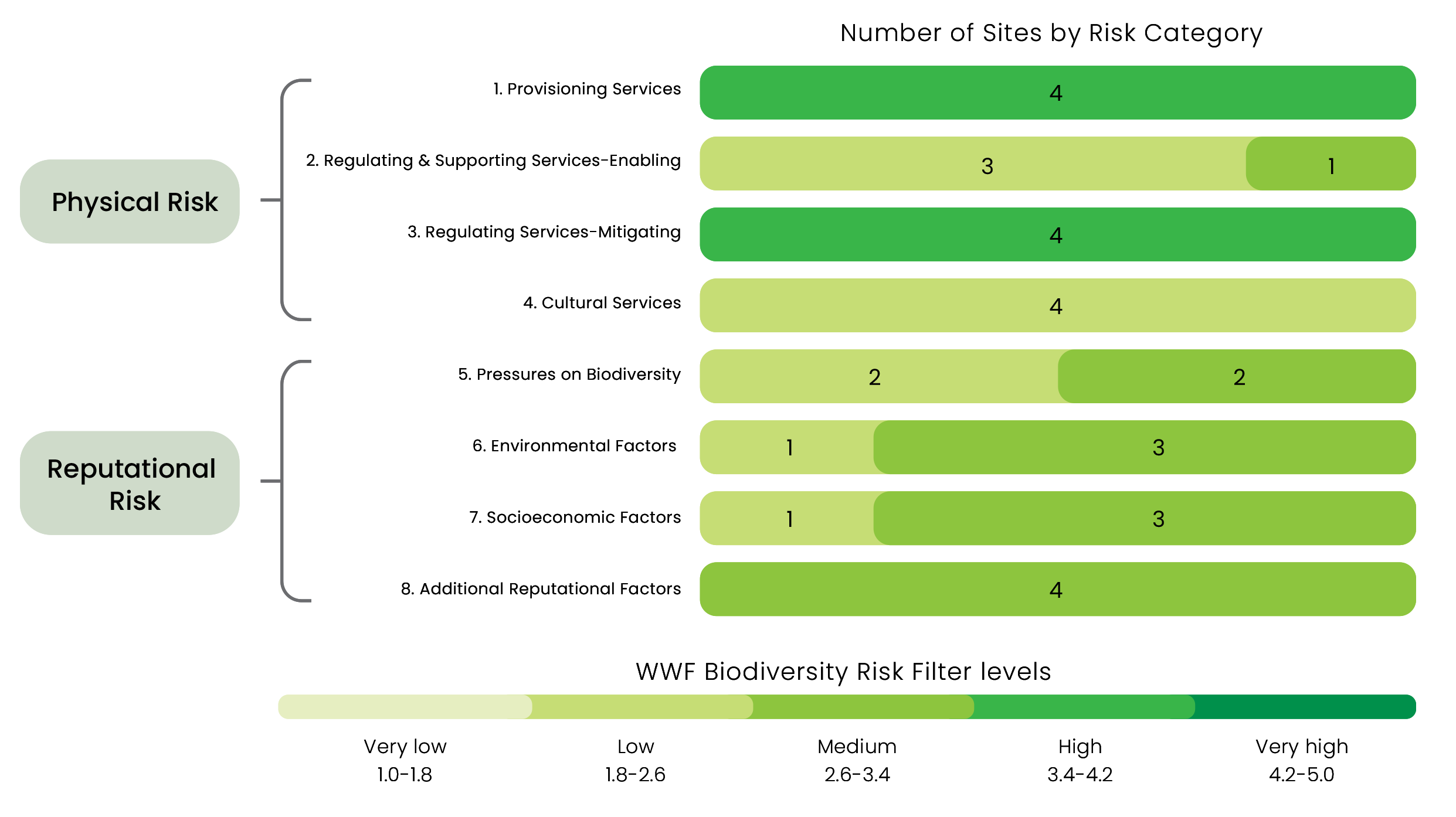
Biodiversity Questionnaire
A risk with high probability of occurrence and level of impact will be classified as the material risk. A total of 7 risks were identified as material risks, including Water Scarcity, Water Condition, Air Condition, Extreme Heat, Typhoons, Pollution and Ecosystem Condition. Among the material risks, Water Scarcity and Typhoons were evaluated as the most significant risks. In response, the corporation will develop corresponding management measures and conduct scenario analyses in accordance to these significant risks.
Scope of Assessment
- Taiwan operating bases
For Taoyuan and Taipei operating bases, the corporation conducted assessments based on the data from the Forestry and Nature Conservation Agency, Ministry of Agriculture, Taiwan.
In 2024, a buffer zone with a radius of 10 kilometres will be established centred on the operation site.This data reflected the present environmental conditions of Taiwan. Through the application of the Taiwan Ecological Network Mapping platform, the corporation was able to conduct small-scale analyses and enhanced the reliability and precision of risk assessment.
Considering ecosystems may still be impacted, to maintain the biodiversity, the corporation continuously manages and monitors the environmental conditions in the areas surrounding these two bases. To minimize the impact, the corporation will conduct detailed evaluations of the potential impact on environment, establish buffer zones, as well as implement pollution control and ecosystem restoration measures during new projects.
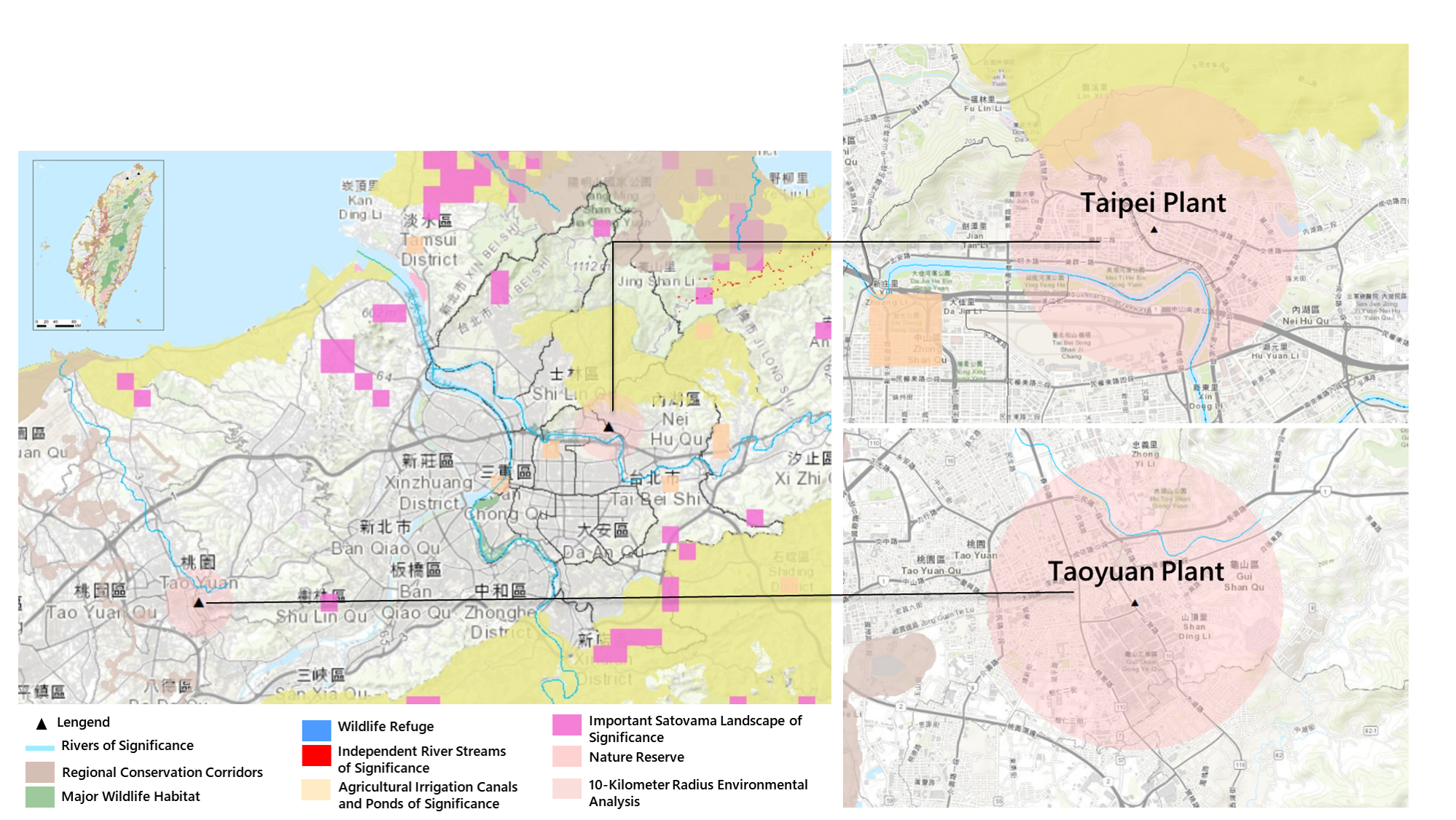
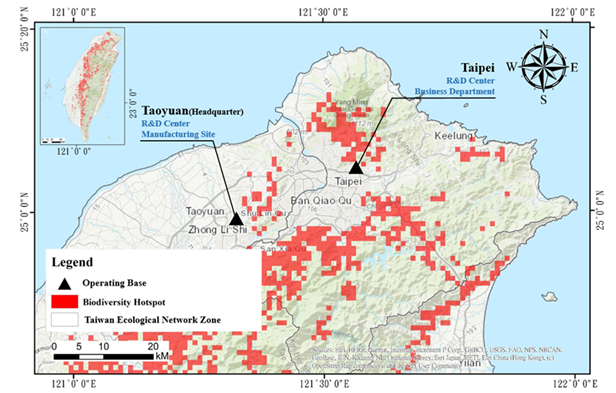
- Overseas operating bases
The corporation employed the World Database on Protected Areas (WDPA), a joint project between the United Nations Environment Programme (UNEP) and the International Union for Conservation of Nature and Natural Resources (IUCN), to determine whether Hanam and Suzhou plants are located in Marine, Terrestrial and Inland Waters Protected Areas designated by local and international government institutions .
Qisda’s plants in Ha Nam, Vietnam, and Suzhou, China do not overlap with any protected areas.The Ha Nam plant is located approximately 7 kilometers from the nearest nature reserve, while the Suzhou plant is about 105 kilometers away.It was found that the overseas operating bases of the corporation are not located in any protected areas.
Business activities are shown to not directly impact local biodiversity. Nevertheless, the corporation employed ecosystem conservation and impact mitigation measures were taken to prevent the business activities from indirectly impacting the surrounding environment.
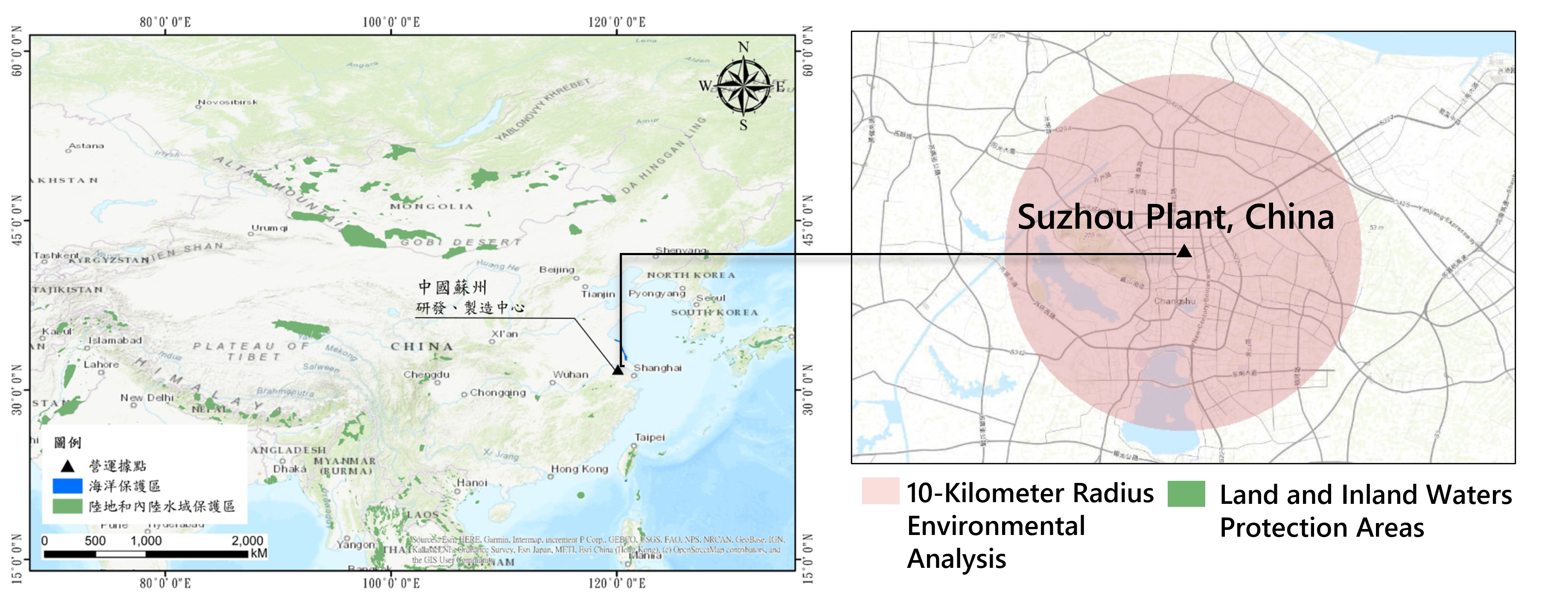
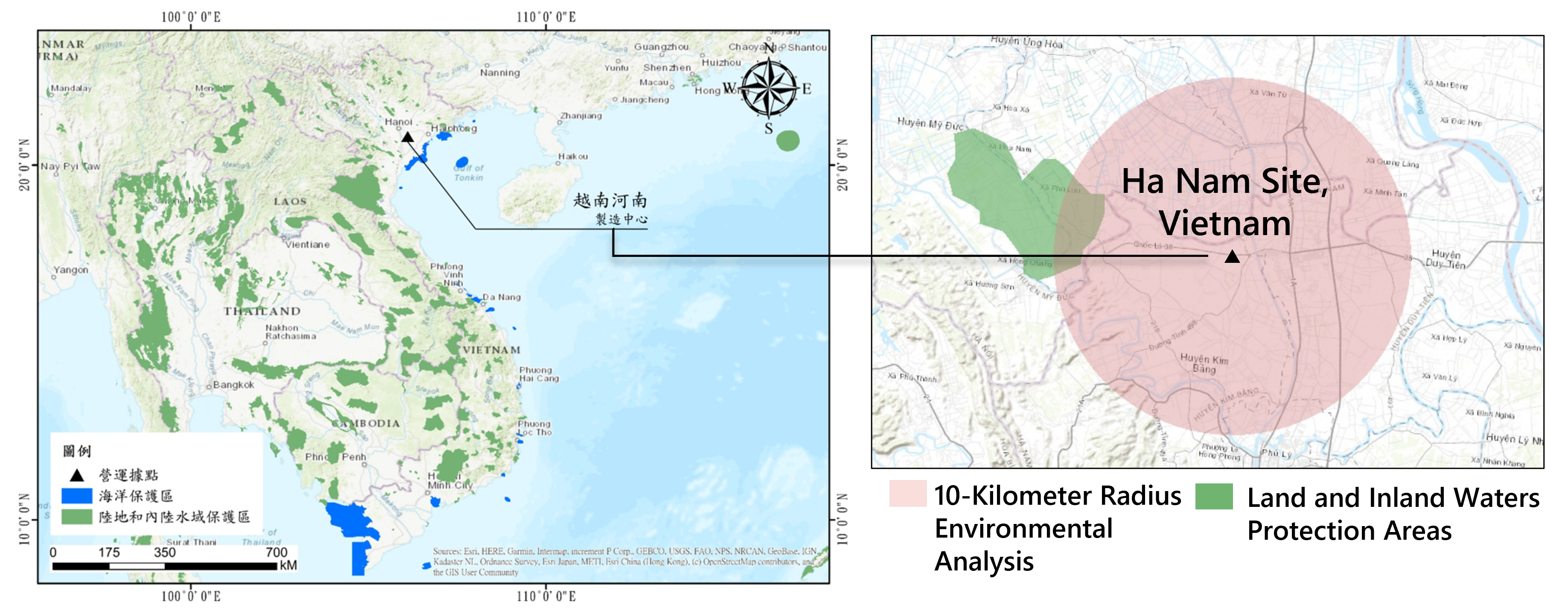
- Other Corporation related regions
Aside from its domestic and international operation bases, the corporation also conducted biodiversity related investigations in corporation-sponsored friendly farming regions in Taiwan. Said regions include the “Hong Bao” tea plantation located in Hengshan Township, Hsinchu County and the “Chun Yuan” farm located in Xizhou Township, Changhua County .
The biodiversity investigation covered mammals, birds, reptiles, amphibians, butterflies, and other arthropods. Other than manual methods such as Visual Encounter Surveys, Line Transects and Point Count Transects, automatic devices such as infrared cameras and microclimate monitoring systems were also utilized to assist the investigation effort. Through the results of investigation, the corporation was able to assess the effectiveness of the biodiversity promotion policy as well as accumulate biocredits. To assess effectiveness and overall carbon sink gains of long term friendly farming, soil samples from both friendly farming zones and non-friendly farming zones were collected from“Chun Yuan” farm on a monthly basis for further examination and analysis to compare and contrast the deviation between soil fertility and organic matter in each respective zone.
 | 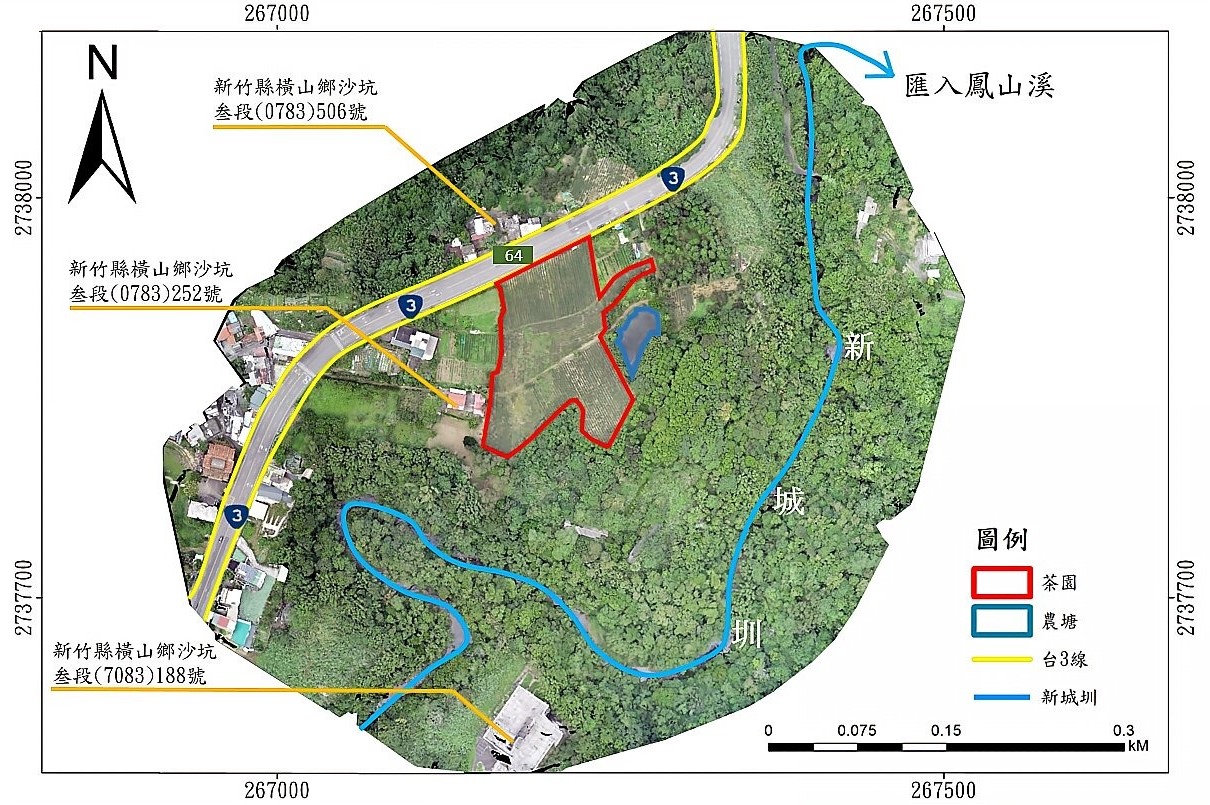 |
| “Hong Bao” tea plantation, Hengshan Township, Hsinchu County | “Chun Yuan” farm, Xizhou Township, Changhua County |
Identification of Risks
To identify and compile the biodiversity risks, the corporation analyzed the results of questionnaire and presented this in sunburst charts. Risks are divided into two charts, actual and potential risks , and further categorized the risks into positive effect or negative impact. The closer a risk is to the center of the chart, the more severe the impact and the more time the corporation needs to devote to measure the impact.
Qisda has already taken the appropriate measures to correct physical biodiversity risks. The high-degree negative impacts of the corporation include the dependency on ecosystem services and the destruction of ecosystems through the course of business activity. When ecosystem services such as water resources, land resources or atmosphere regulation are extracted from the environment during business activity, this may cause the environment to sustain damage.

Actual Risks | |
|---|---|
| No. | Risk |
| 1 | The degree of which the corporation implements biodiversity promotion measures. |
| 2 | The degree of concern the corporation shows on the subject of biodiversity. |
| 3 | Proper implementations of carbon footprint inventories can assist in monitoring carbon emissions and reducing excessive emissions through the course of business activity. |
| 4 | The practice of friendly farming can increase biodiversity and sustainable development. |
| 5 | Participation in environmental sustainability-related courses and lectures can enhance the understanding of biodiversity. |
| 10 | The degree of dependency the company's products have on ecosystem services during the production process. |
| 11 | The degree of impact the company's business activity has on biodiversity. |
| 12 | Environmental pollution caused by business activity. |
The aforementioned results enable the corporation and related organizations to identify various risks of biodiversity associated with the business activity. Furthermore, these results are made available to the public. The policy makers can gain a better understanding of the nature and impact of these risks and establish precise and purposeful risk management strategies. It is expected to ensure ecological sustainability and preserve biodiversity.
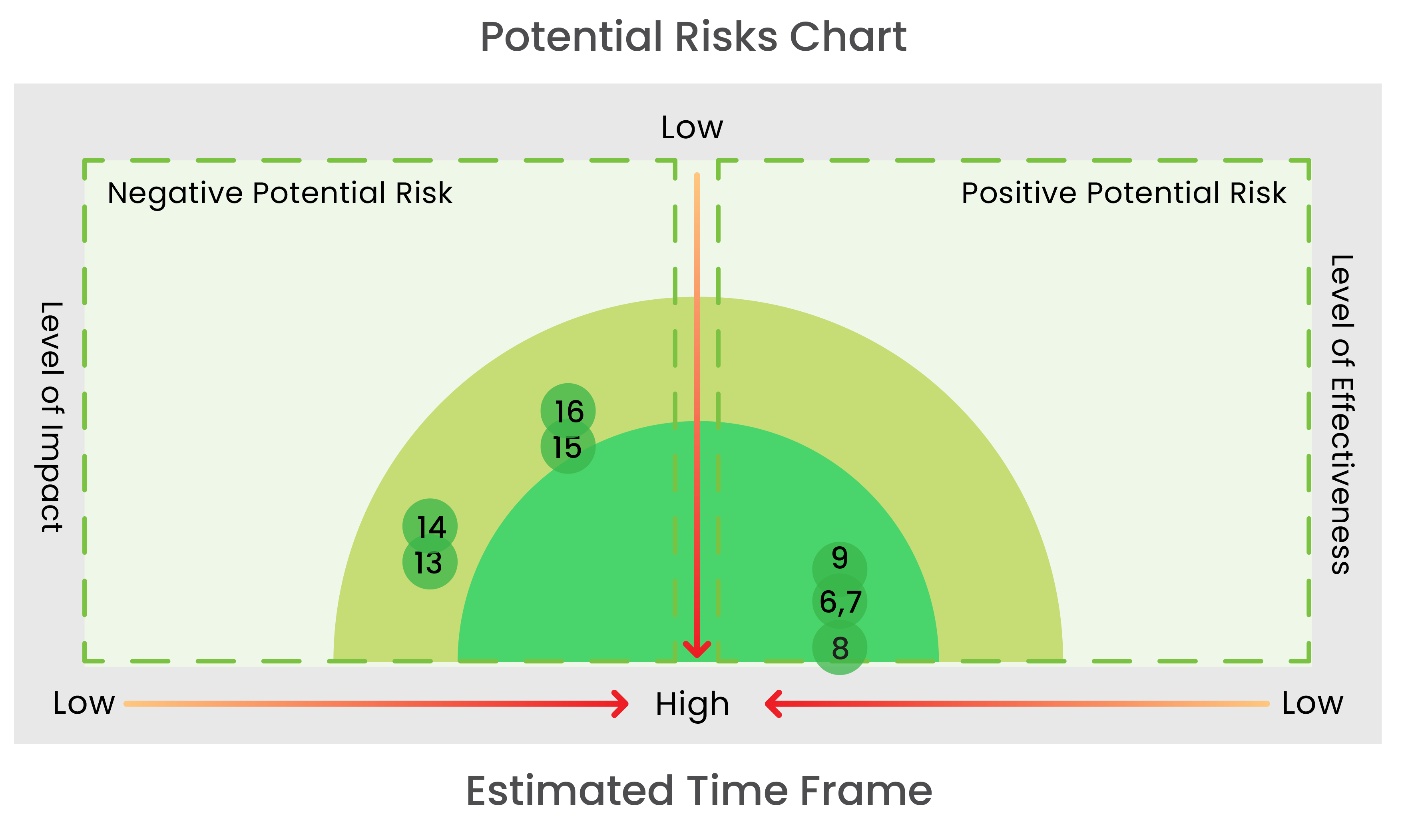
Potential Risks | |
|---|---|
| No. | Risk |
| 6 | Proper conservation and management of watersheds can increase Yellow Carbon, Green Carbon and Blue Carbon. |
| 7 | Employing modern marketing techniques can improve the sales performance of agricultural products. |
| 8 | Holding environmental sustainability-related courses and lectures can enhance others' understanding of biodiversity. |
| 9 | Sustainable development can be achieved by combining agricultural production management with environmental standards. |
| 13 | Potential scarcity of water resources in operating sites in the future. |
| 14 | The potential impact of business activity water use on stakeholders. |
| 15 | Reputational damage caused by the breaching of laws and the inability to keep up to date with evolving global standards. |
| 16 | Business activity interrupted by extreme heat results in poor business performance. |
Protection of Forests
The world has lost a large amount of forest land due to deforestation, resulting in global warming and the loss of biodiversity, both of which pose significant threats to the survival of the environment we live in. In addition to developing the Commitment to No-Deforestation and Biodiversity, we pledge to use deforestation-free products such as toilet paper and printing paper.
We plan to restore deforested land by planting trees and comply with domestic and international laws, collaborating with our customers, suppliers, and partners to reach our NNL and NPI goal in 2050.





Want to know more detailed content?
Read Report Contents




